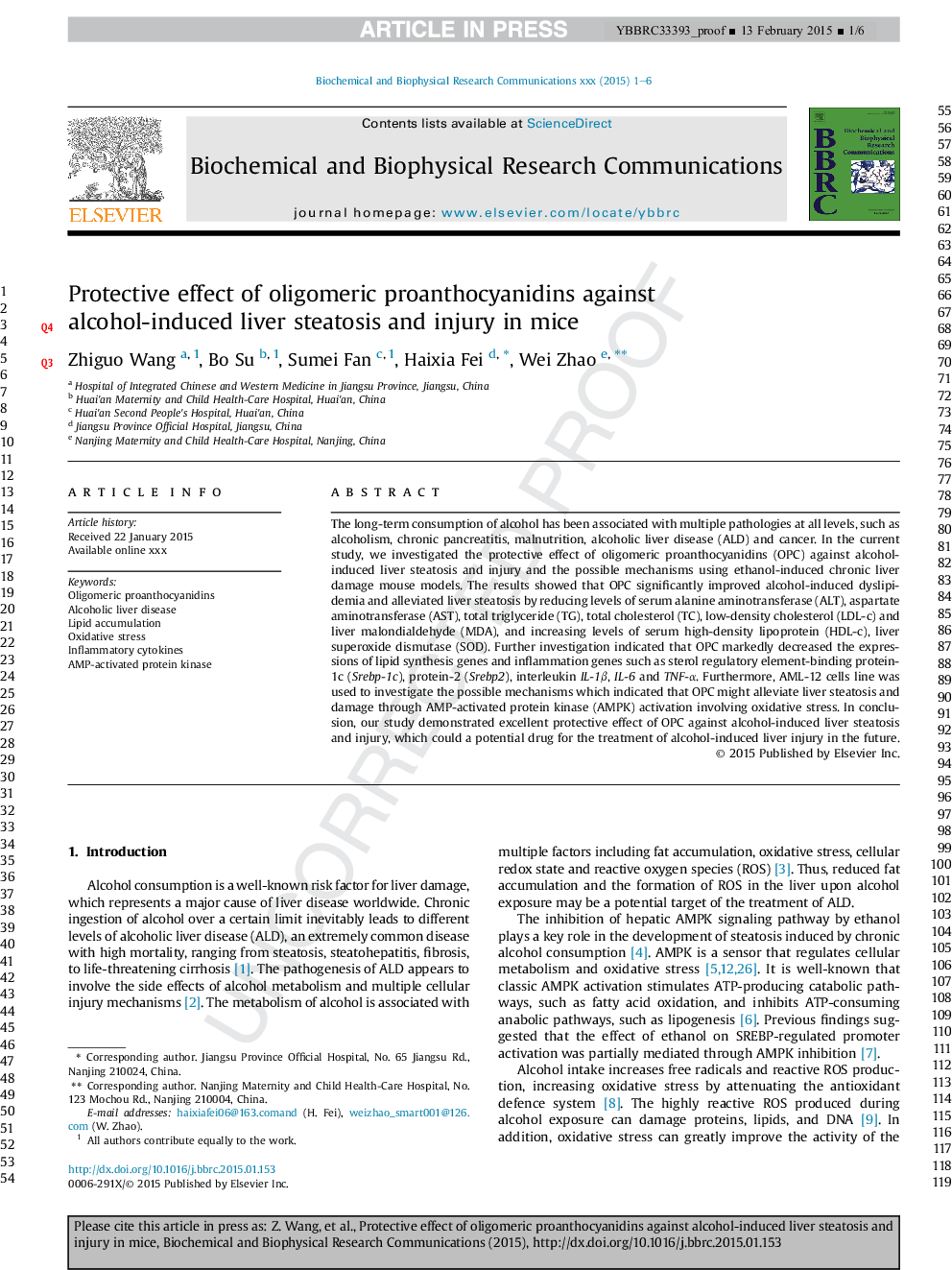| Article ID | Journal | Published Year | Pages | File Type |
|---|---|---|---|---|
| 10751904 | Biochemical and Biophysical Research Communications | 2015 | 6 Pages |
Abstract
The long-term consumption of alcohol has been associated with multiple pathologies at all levels, such as alcoholism, chronic pancreatitis, malnutrition, alcoholic liver disease (ALD) and cancer. In the current study, we investigated the protective effect of oligomeric proanthocyanidins (OPC) against alcohol-induced liver steatosis and injury and the possible mechanisms using ethanol-induced chronic liver damage mouse models. The results showed that OPC significantly improved alcohol-induced dyslipidemia and alleviated liver steatosis by reducing levels of serum alanine aminotransferase (ALT), aspartate aminotransferase (AST), total triglyceride (TG), total cholesterol (TC), low-density cholesterol (LDL-c) and liver malondialdehyde (MDA), and increasing levels of serum high-density lipoprotein (HDL-c), liver superoxide dismutase (SOD). Further investigation indicated that OPC markedly decreased the expressions of lipid synthesis genes and inflammation genes such as sterol regulatory element-binding protein-1c (Srebp-1c), protein-2 (Srebp2), interleukin IL-1β, IL-6 and TNF-α. Furthermore, AML-12 cells line was used to investigate the possible mechanisms which indicated that OPC might alleviate liver steatosis and damage through AMP-activated protein kinase (AMPK) activation involving oxidative stress. In conclusion, our study demonstrated excellent protective effect of OPC against alcohol-induced liver steatosis and injury, which could a potential drug for the treatment of alcohol-induced liver injury in the future.
Keywords
Related Topics
Life Sciences
Biochemistry, Genetics and Molecular Biology
Biochemistry
Authors
Zhiguo Wang, Bo Su, Sumei Fan, Haixia Fei, Wei Zhao,
